JHP Newsletter - 2010, No. 2, 1 May
Greetings from Parker, Colorado.
We had a very productive time in California and Arizona before returning to Parker in early April. We're getting caught up on some work here in Parker and waiting for the snow to stop in central Colorado so we can head over to Utah with a less stressful drive.
Travel: Joshua Tree National Park, California
We went to Joshua Tree National Park, California, at the end of February for nine nights and met up with some photographer friends of ours from Canada. We had stopped to visit them on our way to Alaska last summer, and it was good to get together with them again. The park is, not surprisingly, known for its Joshua Trees, and we photographed them mostly at dawn and dusk to get a colorful sky behind them. My favorite tree (below left) reminds me of something from a Dr. Seuss book. The image was created from one RAW file processed three times (once to capture the bright sky, once to bring in some detail in the shadows, and once to help blend the two) and then combined by hand in Photoshop. The park is also known for its boulders, and we photographed them too. One afternoon, we had some nice wispy clouds that provided a nice background for the arch at White Tank (below right).
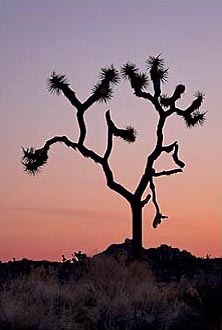
1/10 sec, f8, ISO 100

1/6 sec, f11, ISO 100
Because the wildflowers, and the poppies in particular, were late to bloom around Antelope Valley, we went to the San Jacinto Wildlife Area instead. There's a nice auto tour loop through the managed wetlands, and we had fun photographing the birds there. There were lots of Red-Wing Blackbirds and we got great images of a Snowy Egret among a field of Goldfields (yellow wildflowers).
Travel: Anza-Borrego Desert State Park, California
We went to Anza-Borrego Desert State Park, California, for six nights in early March. One afternoon, we drove to the Pumpkin Patch in the middle of the adjacent Ocotillo Wells State Vehicular Recreation Area. It was a new destination for both of us, and the dirt road we took most of the way there, the Cross Over Trail, was very bumpy. The "pumpkins" are large concretions, about 2-3 ft (60-90cm) in diameter, and we had fun photographing them (below left). The "pumpkins" are surrounded by a fence to keep the vehicle traffic away from them, and late in the afternoon the fence casts a shadow across some of the best "pumpkins." So, I took almost all of my exposures after the sun had set in order to avoid the shadows. We took another "road" out of the Ocotillo Wells State Vehicular Recreation Area, the dry Tule Wash, and it was a veritable expressway compared to the undulating Cross Over Trail.
We went to Font's Point, another first for both of us, one afternoon, and the view is spectacular. The road goes practically to the edge of a cliff where the badlands begin, and I loved the patterns formed by the erosion along the cliff (below center). The Red Barrel Cacti were starting to bloom, and we photographed the interesting blossoms (below right).
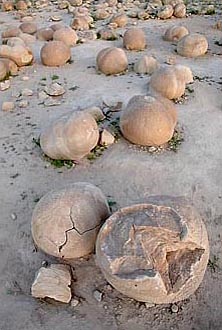
Recreation Area, California, USA
1/8 sec, f8, ISO 100
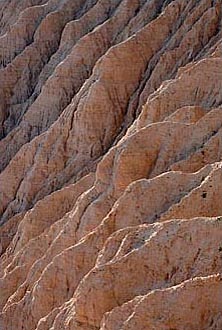
California, USA
100-400 (at 115mm),
1/15 sec, f11, ISO 100
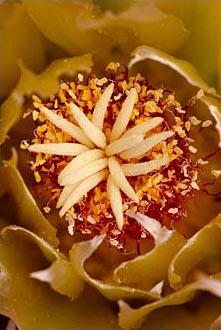
California, USA
1/20 sec, f11, ISO 100
The wildflowers had started to bloom in Anza-Borrego Desert State Park, but the carpets of wildflowers hadn't formed yet, so we focused on individual flowers (below left and right).
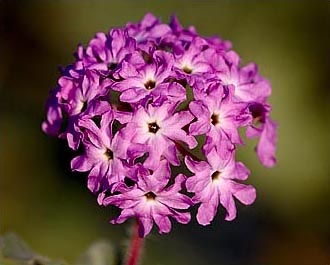
California, USA
1/125 sec, f8, ISO 100
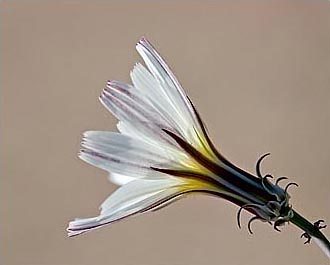
California, USA
1/125 sec, f11, ISO 100
Travel: Salton Sea, California
We went to the Salton Sea for three nights in mid March. We found several new Burrowing Owl burrows, and one was perfect for photography. I was able to get my best-ever Burrowing Owl portrait there (below left): the background is uniform and out of focus, the bird is perched atop a berm with its feet showing, and there's a catch-light in both eyes. We also photographed a very cooperative Great Egret, and to change things up, we photographed it backlit (below right).
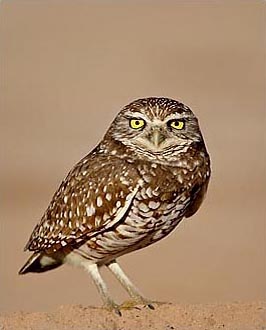
1/1500 sec, f8, ISO 250
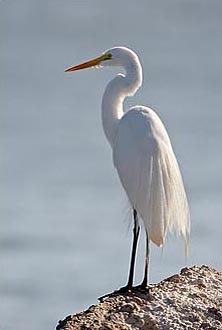
1/1500 sec, f8, ISO 250
Travel: Organ Pipe Cactus National Monument, Arizona
We went to Organ Pipe Cactus National Monument in Arizona for four nights in late March, and the wildflowers were near their peak. :) I took some pictures of the overall landscape with Organ Pipe Cacti and Saguaro Cacti, but my favorite images were of individual wildflower blooms. Purple Owl's Clover looks like Paintbrush (below left), and Gordon's Bladderpod has tiny yellow flowers (below right).
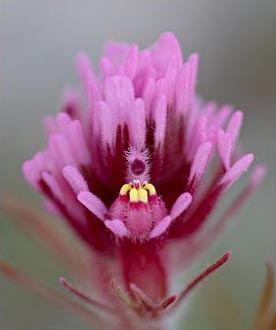
1/10 sec, f5.6, ISO 100

1/30 sec, f5.6, ISO 100
Travel: Southern Arizona Mountains
We went to Madera Canyon for two nights to photograph hummingbirds and the elusive Elegant Trogon. It was our first time there, and it was largely a scouting visit. We used a multiple-flash setup to photograph the hummingbirds, and got some nice images of Broad-Billed Hummingbirds (below left) and Magnificent Hummingbirds. We didn't find an Elegant Trogon, but heard reports that one was seen the day we left. We're planning to return another year when we'll spend a lot more time there.
Then we went to The Pond in nearby Amado. It's an artificial pond created by Bill Forbes, the creator of the PhotoTrap system, that's set up with props to photograph birds. We spent a whole day there and photographed 18 species of birds and four (4) species of mammals. The most unusual images we captured there were photographed at night with the help of a PhotoTrap system to trigger a set of flashes when a bat or Western Screech-Owl (below right) flew through an infra-red beam.
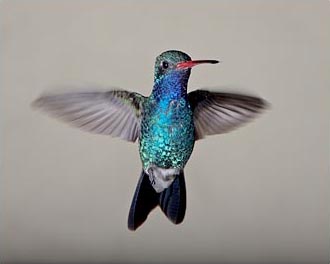
multiple flash, 1/250 sec, f19, ISO 200
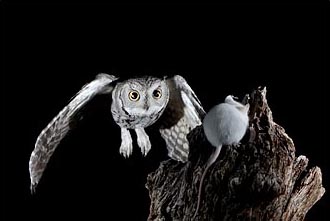
two flashes, 1/125 sec, f16, ISO 400
Then we went to the Patagonia area for five nights at the end of March to photograph hummingbirds and to look for another Elegant Trogon. It was our first time there too. We photographed hummingbirds in natural light at the Paton's in Patagonia. They have several hummingbird feeders, and other bird feeders, set up on their property and invite birders to view the visitors. I was able to get a nice image of a Violet-Crowned Hummingbird (below left). One morning, we went to Patagonia Lake State Park to look for an Elegant Trogon that spends the winter in the park. We didn't see it, but talked with some birders who had seen it the evening before. While there, we photographed a very cooperative male Vermillion Flycatcher. He would land on a favorite perch while making his rounds, so we set up and waited for him to come back, and kept waiting until he landed and perched just right (below right).
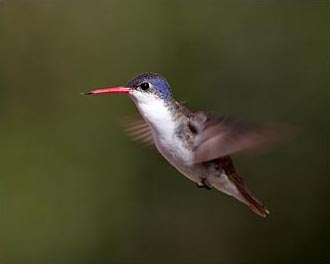
1/1500 sec, f8, ISO 400
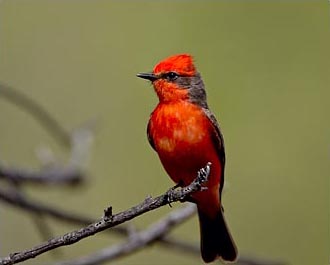
1/1500 sec, f8, ISO 400
Then we made one more stop to photograph hummingbirds and an Elegant Trogon: the Chiricahuas near Portal for three nights in early April. We used our multiple-flash setup to photograph the hummingbirds, and there were Black-Chinned, Blue-Throated, Broad-Billed, possibly a Lucifer, and Magnificent Hummingbirds. My favorite image is of a male Magnificent Hummingbird with his gorget lit up (below left). Three young Cliff Chipmunks (below right) kept an eye on us as we photographed the hummingbirds. We did not see an Elegant Trogon, nor did we get reports of one being in the area yet. We'll definitely return to the area another year.
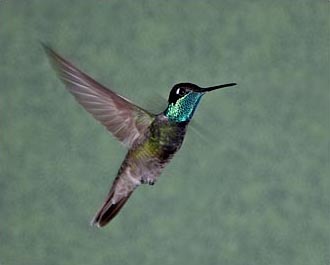
multiple flashes, 1/125 sec, f19, ISO 125
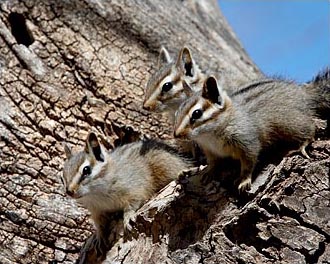
1/180 sec, f16, ISO 400
Take care and happy shooting.
— James
James Hager Photography :: www.jameshagerphoto.com




